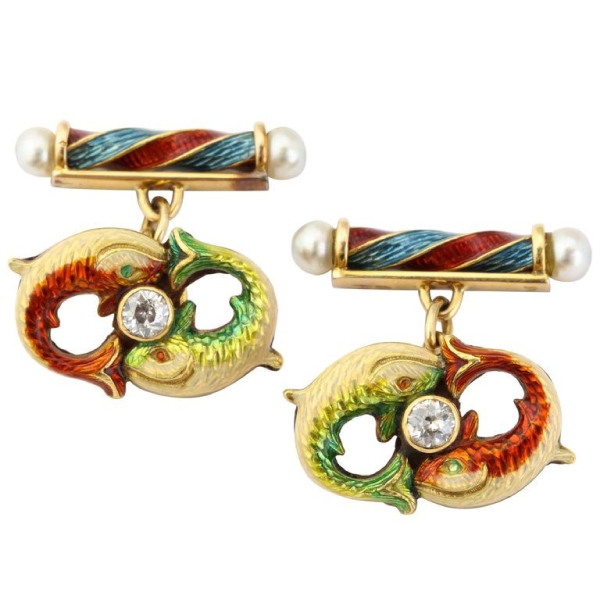Among the designs of fine jewelry and precious diamonds, there is another type of elegant and distinctive jewelry that has formed a world mixed with elegance and life with all its details, which are enamel-plated jewelry.
Enamel was known to be used in many ancient times as the ages of the Pharaohs and the Chinese, whose palaces decorated with colorful and sparkling jewelry witnessed a lot of elegance and excellence in its details, and the technology of enamel applications in jewelry design spanned several ages, and this jewelry still captures the minds of many people to this day.
What is enamel? What are the most important applications for jewelry? For more details, follow the following article:
- Enamel
A type of equal color glass that usually consists of quartz sand, iron oxide, potassium oxide and borax, which is transparent and colorless after its release at temperatures between 700 and 900 degrees Celsius. It is colored by adding different metal oxides, which are then applied to a suitable metal.
- Types of minerals to which enamel is applied
Enamel technology is usually applied to gold, silver, or copper alloys.
- The technique of adding enamel to jewelry
The addition of enamel to jewelry is called polishing, and it is a popular method for jewelry designers, as it accentuates their creative side and brings a vibrant charm to their designs by merging crushed glass onto the metal.
Common design patterns in enamel jewelry:
- Enameled jewelry
It is the technique by which enamel can be added to jewelry pieces by dry sifting or wet packing
- Cloisonné
(“French” cell) is a technique in which thin wires of silver or pure gold are used to draw the outlines of an enamel-filled design. The piece is then placed in an oven where the enamel is thawed and the colors are combined on the metal.
- Champlevé
In this technique, dips in the metal are made by etching or engraving, then building layers of enamel until they rise slightly above the surface of the metal. Then the enamel is released and the metal is polished.
- Guilloché
It is a technique in which transparent enamel is applied to a metal piece that contains cut designs containing cavities and grooves, using polishing and then releasing the hot enamel.
- Plique à Jour
Plique à jour enamel was popular during the Art Nouveau period, and in this technique, the enamel is not applied directly to the metal, but instead, the enamel powder is applied to cells made of copper or mica flakes, where they are dug away, and then merged onto Metal with acid, to create a glass-like effect, light-colored jewelry often has luminous quality because the light is able to penetrate the piece from front and back.
Although enamel technology gives elegant colors to jewelry and gives them an appearance that suggests luxury and sophistication, attention must be paid if a part of the enamel contains cracks or scratches, the damage cannot be repaired and will be considered a complete loss of the jewelry piece.
You can join one of our training programs at the first professional jewelry design and manufacturing academy in Istanbul VARNA JEWELRY ACADEMY, and gain the experience and craftsmanship you need about everything you are looking for in the world of jewelry design and gem art.

